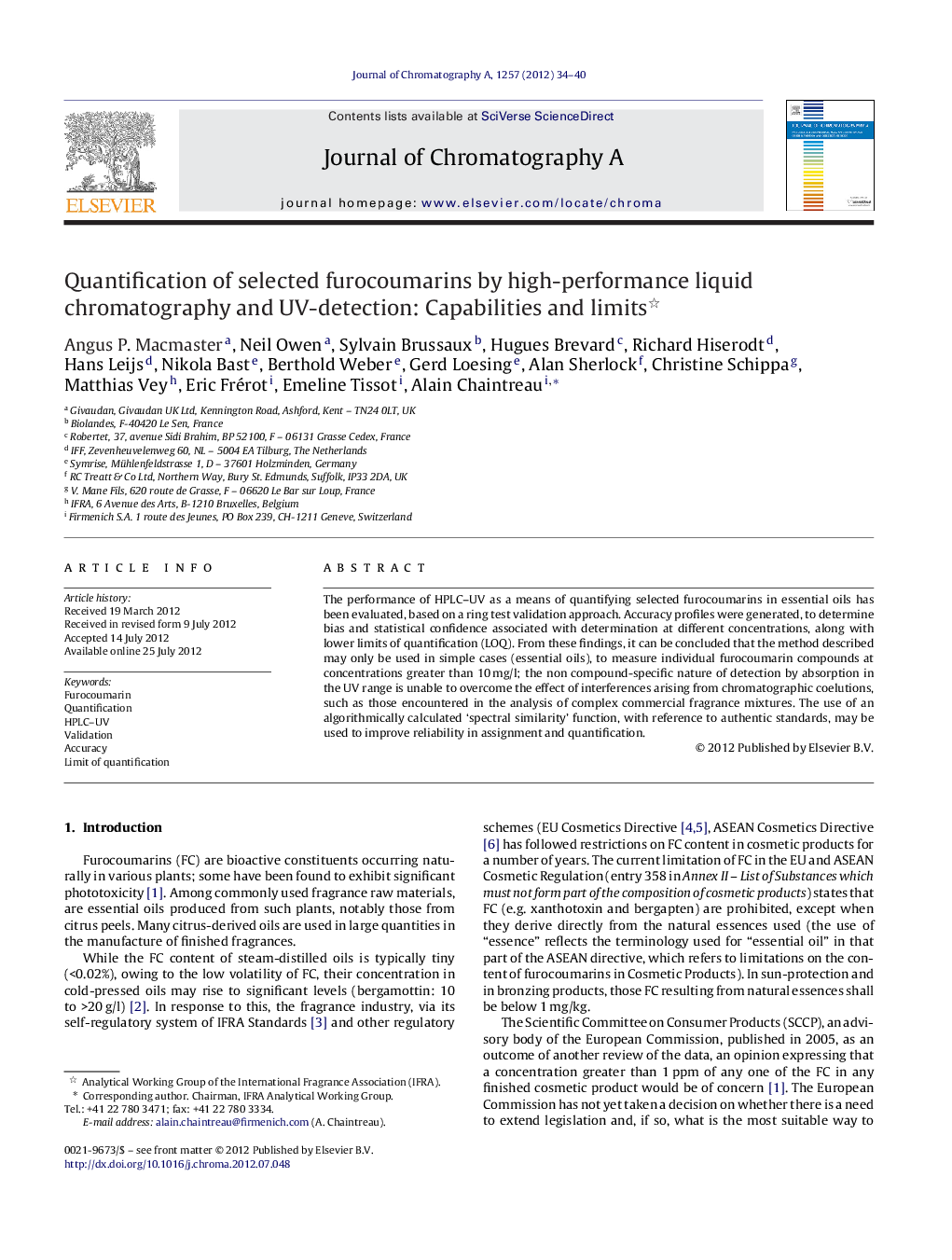| Article ID | Journal | Published Year | Pages | File Type |
|---|---|---|---|---|
| 1202009 | Journal of Chromatography A | 2012 | 7 Pages |
The performance of HPLC–UV as a means of quantifying selected furocoumarins in essential oils has been evaluated, based on a ring test validation approach. Accuracy profiles were generated, to determine bias and statistical confidence associated with determination at different concentrations, along with lower limits of quantification (LOQ). From these findings, it can be concluded that the method described may only be used in simple cases (essential oils), to measure individual furocoumarin compounds at concentrations greater than 10 mg/l; the non compound-specific nature of detection by absorption in the UV range is unable to overcome the effect of interferences arising from chromatographic coelutions, such as those encountered in the analysis of complex commercial fragrance mixtures. The use of an algorithmically calculated ‘spectral similarity’ function, with reference to authentic standards, may be used to improve reliability in assignment and quantification.
► HPLC with UV detection is the usual method to quantify furocoumarins, with contradictory reported quantification limits (0.019–61 mg/l). ► This collaborative test shows that this method is only applicable to simple cases, above a limit of 10 mg/l. ► To be valid, each quantitative result should be supported by the positive identification of the analyte comparing its UV spectrum to that of a authentic substance.
